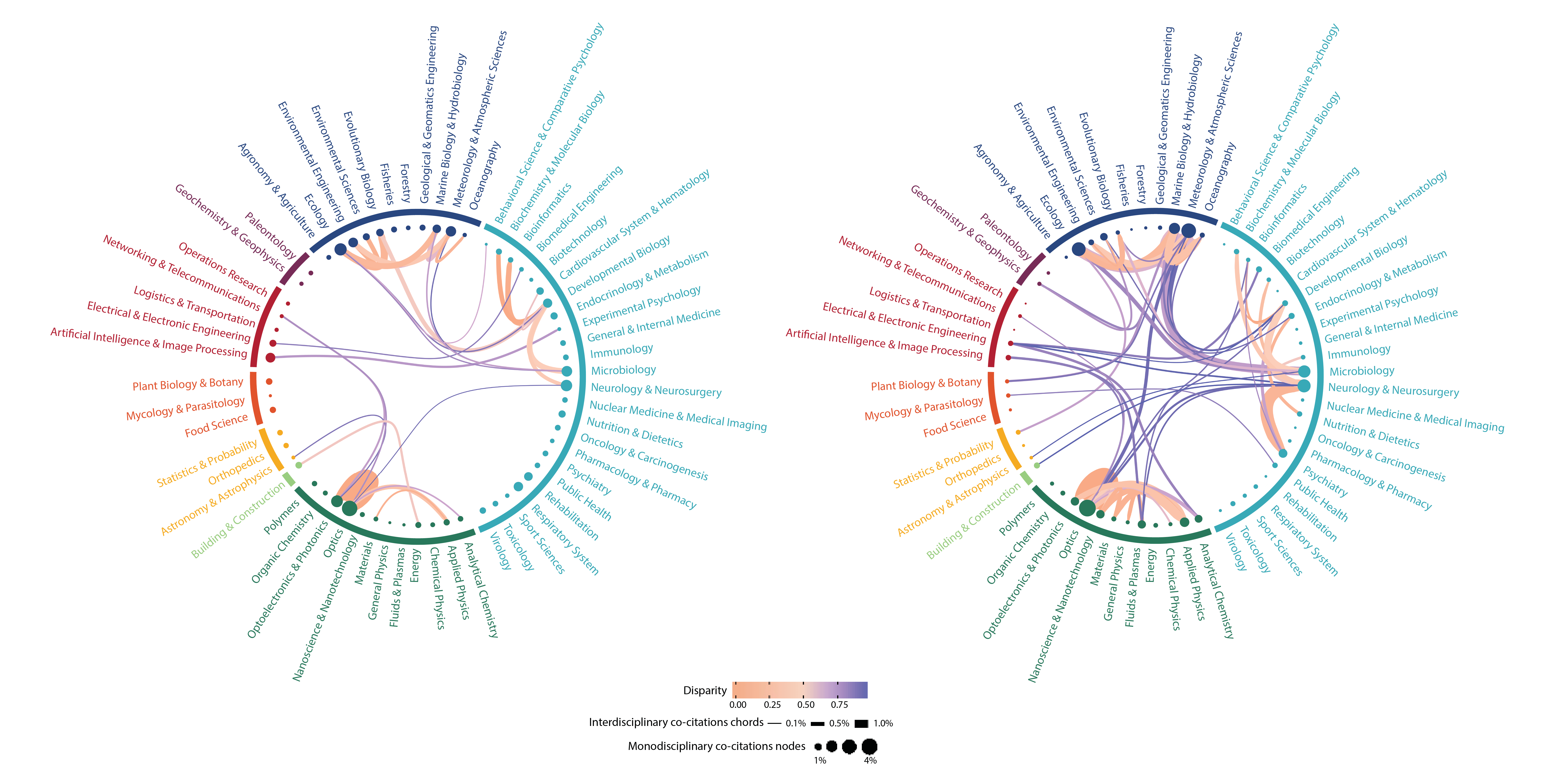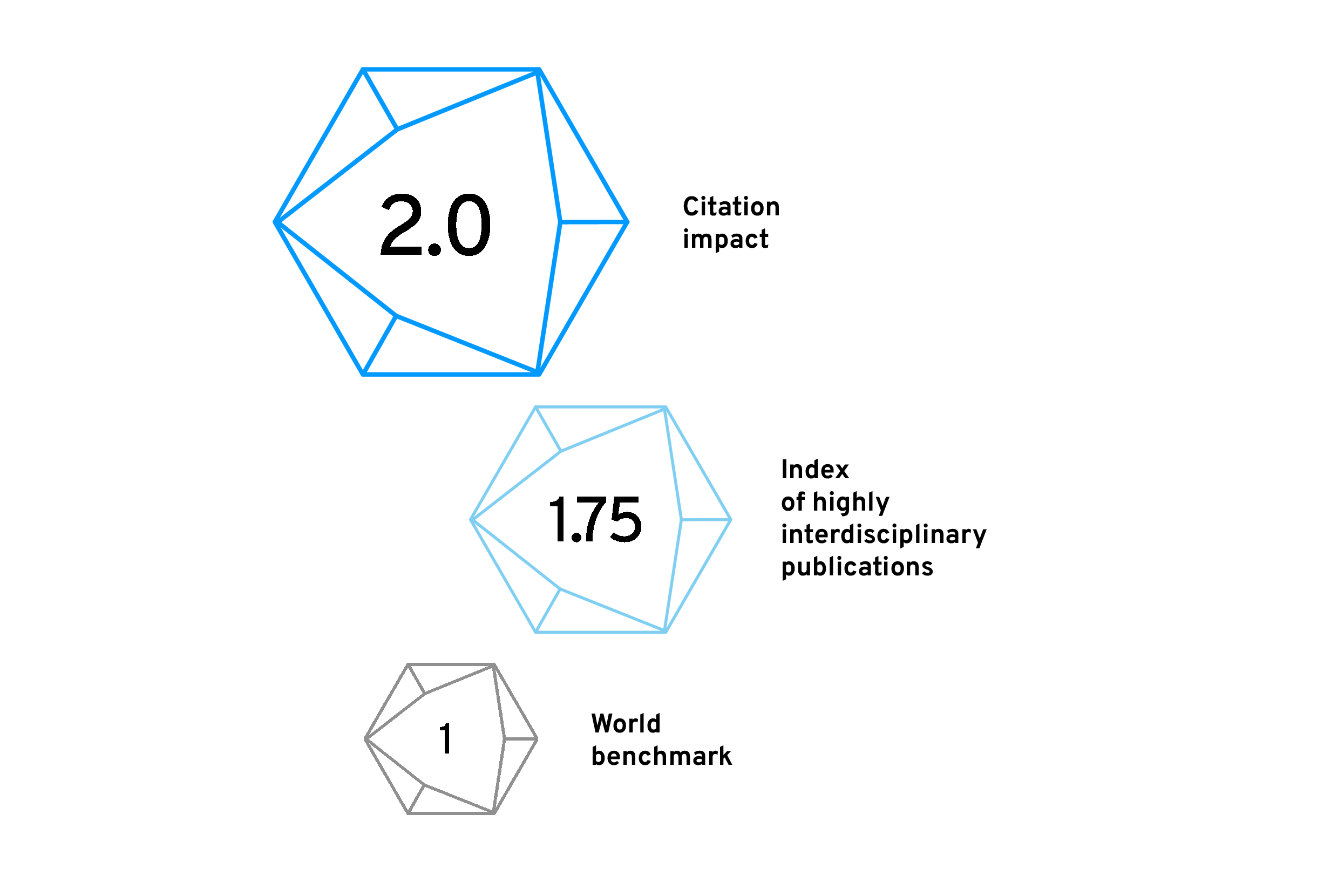Increasing the impact of research through interdisciplinarity
Since it was implemented in 2015, Sentinel North has evolved to become a true model of interdisciplinary collaboration. The strategy has mobilized an extensive network of research members and students hailing from over 45 departments at Université Laval, including engineering, natural sciences, social sciences and health sciences. A shared commitment to interdisciplinarity in research and training led to the development of more than 90 innovative collaborative projects and helped train a new generation of over 215 researchers who are able to work together across disciplinary boundaries.
The impact of Sentinel North’s interdisciplinary approach was brought to light in a comparative bibliometric analysis. Using the network of co-citations in publications produced by Sentinel North research teams, the key dimensions of interdisciplinarity were measured: disciplinary diversity, intellectual distance between disciplines and evenness between cited disciplines. A new approach used to visualize these dimensions clearly demonstrated that the publications by Sentinel North teams had levels of interdisciplinary integration that were significantly higher than those of the control group. It is becoming increasingly substantiated in literature that interdisciplinarity increases the impact of research.
With its ambitious interdisciplinary approach, Sentinel North has had a structuring effect on Université Laval. In particular, the strategy helped to break down traditional barriers between disciplines and build innovative and lasting collaborations between researchers. It also widely contributed to the development of a culture of interdisciplinarity at the institution. These profound changes represent Sentinel North’s long-term impacts and have helped promote Université Laval as a leader in interdisciplinary research focusing on discovery, innovation and solutions to northern issues.

Figure 1: Chord diagrams showing co-citation links between disciplinary subfields for papers produced by: (on the left) control group – research initiatives other than SN, and (on the right) those of the Sentinel North program. The disciplinary subfields displayed along the circular axis are based on the Science-Metrix classification.
Results with a strong impact
Between 2015 and 2025, Sentinel North’s scientific output, measured by the number of peer-reviewed journal articles and conference papers, grew steadily.
To date, the teams have produced over 1,000 peer-reviewed articles published in leading journals, most of which are highly interdisciplinary.
Sustained efforts were made to mobilize these results and maximize their impact, while ensuring that they are increasingly published open access.
